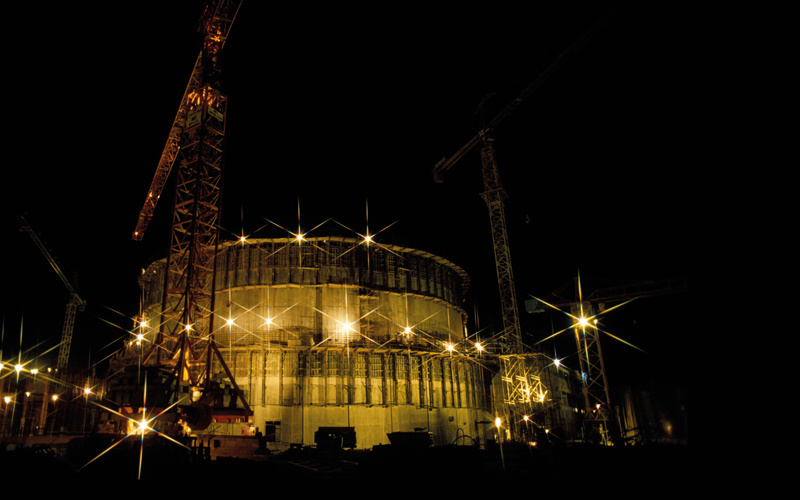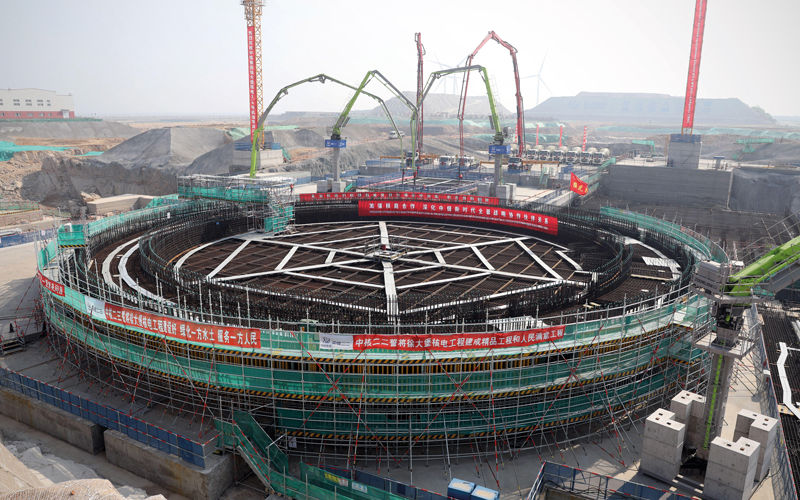The geopolitics of nuclear energy: partnerships, progress, and prospects
Amid shifting geopolitical landscapes and energy demands, countries are forging strategic partnerships to advance nuclear power initiatives, promising both challenges and opportunities for a sustainable energy future, says Firdaus Azman at EIC

While liquefied natural gas and gas power plants offer an interim solution to the pressing issues of energy security and climate change, nuclear energy is emerging as a key contender for long-term clean power.
EIC has seen an increase in the number of nuclear projects achieving final investment decision and advancing, fuelled by bilateral relationships between nations with established nuclear capabilities and those striving to develop them. These relationships have played a crucial role in expanding the presence of Generation III pressurised water reactors (PWRs). However, there is anticipation around small modular reactors (SMRs), a variation of PWRs known for their improved safety features and reduced space requirements.
Asia-Pacific: Leading the nuclear energy charge
China and India are pivotal nuclear markets in the Asia-Pacific region. China, boasting self-reliance in reactor design, construction and the nuclear fuel cycle, leads with the majority of projects and confirmed final investment decisions (FIDs), representing around 44% of the region’s total CAPEX value. India is close behind, contributing 37% of this value. Noteworthy in India are two major power plant projects: the 9,600MW Jaitapur nuclear power plant (NPP) in Maharashtra and the 7,428MW Kovvada NPP in Andhra Pradesh.
India’s collaborations
French involvement in India’s nuclear sector dates back to 2009, when Areva was contracted as the reactor supplier for the Jaitapur NPP. French electric-utility provider EDF assumed the role in 2021, following Areva’s bankruptcy. Approval is pending for use of EDF’s six PWRs, based on the European Pressurised Reactors design, set for commercial operations by 2031.
This partnership between the Indian and French governments has stimulated discussions on advancing an ‘SMR and Gen III+ nuclear programme’. These talks gained traction during President Macron’s 2023 visit to India as part of the 25th India-France Strategic Partnership. This collaborative endeavour could herald a new era of nuclear innovation, possibly marking the commencement of SMRs in India.
US reactor supplier Westinghouse has worked with the Indian government as far back as 2016, notably in developing the Kovvada NPP. This stemmed from a bilateral agreement that pre-dates the project by more than a decade, originating in the 2005 US-India Civil Nuclear Agreement. India’s status as the sole signatory to the Nuclear Non-Proliferation Treaty gave it access to nuclear trade with the US, despite possessing nuclear arms.
While the US remains interested in supplying India with Westinghouse’s SMR line, specifically the AP300 series, uncertainties loom over this alliance due to India’s relations with the Russian government. This includes the US$13.5bn Kudankulam NPP expansion series, slated for its first firing in May 2025.

European nuclear dynamics
The nuclear sector’s supply chain is being disrupted by US and other Western nations’ sanctions against Russia, over Ukraine – but new alliances are emerging. To mitigate reliance on Russian fuel for their water-water energetic reactors (VVERs), the Czech Republic’s CEZ has excluded Russia and China from participating in the proposed 1,200MW fifth unit of the Dukovany NPP. An engineering, procurement, and construction contract is currently in progress, with South Korea’s KHNP and EDF considered as contractors. Despite Westinghouse’s bid being cancelled, it managed to provide specially made fuel for the Dukovany NPP’s operating units, bridging the void left by Rosatom.
Hungary’s strategy
Hungary stands out in the region in intensifying its cooperation with Russia, pledging to overlook any sanctions imposed on the country. This commitment has secured the ongoing construction of the second unit of the US$13.6bn Paks II NPP, expected to be completed in the early 2030.
The Hungarian government persists in blocking further rounds of EU sanctions, extending its stance to countries such as China and India. Presently, the consequences of Hungary’s refusal to adhere to EU sanctions remain uncertain.
Russian influence in the MENA region
Despite Western sanctions on Russia, nuclear projects in other regions are progressing, partly due to Rosatom participation. Projects in the Middle East and North Africa (MENA) that had secured FIDs by 2024 show Russian influence, including Rosatom’s involvement in the initial concrete pouring of the fourth VVER-1200 unit at Egypt’s US$30bn El-Dabaa NPP in January.
At the International Forum Atomexpo 2024 in Sochi, TSS Group announced it was establishing a joint venture (JV) with Rosatom subsidiary Atomenergomash. The goal is to deploy and manage a fleet of floating power units (FPUs) equipped with RITM-200M reactors abroad. Targeted regions include Africa, the Middle East and Southeast Asia. Each FPU is projected to have a minimum electrical generation capacity of 100MW and an operational lifespan of up to 60 years.
The plan set out by the JV will take shape during 2029–2036. Russia’s involvement in the overseas market will likely catapult the progression of NPPs, especially in countries with stable relations such as Iran and Egypt.
A sustainable future
The convergence of various factors – such as a volatile geopolitical environment, inflationary pressures and supply chain disruptions – presents a multifaceted challenge, but also an opportunity for nations striving for clean and affordable energy solutions.
As geopolitical tensions persist, countries with limited nuclear capabilities may find themselves dependent on legacy nuclear powers. As the deadline for COP21 emissions reduction looms, collaboration to develop safe, efficient nuclear technology will be indispensable.
Where are the opportunities?
Countries with the highest FID rates
| 1 | China | 15 projects have reached FID | US$88.46bn |
| 2 | India | 7 projects have reached FID | US$74.62bn |
| 3 | Russia | 5 projects have reached FID | US$20.21bn |
Source: EICDataStream (April 2024)
Top three regions leading the way in nuclear projects with confirmed FIDs
- Asia-Pacific
- Europe
- Middle East and North Africa
Major projects To Watch
India:
Jaitapur Nuclear Power Plant
Value: US$51bn
Startup: 2031
Stage: Feasibility
Status: Planning consent applied
Operator: Nuclear Power Corporation of India Ltd
Andhra Pradesh (Kovvada) Nuclear Power Plant
Value: US$25bn
Startup: 2030
Stage: Feasibility
Status: Government approved
Operator: Nuclear Power Corporation of India Ltd
Kudankulam Nuclear Power Plant (Units 5 & 6)
Value: US$25bn
Startup: 2030
Stage: Feasibility
Status: Government approved
Operator: Nuclear Power Corporation of India Ltd
Hungary:
Paks II Nuclear Power Plant
Value: US$13.6bn
Startup: 2032
Stage: EPC
Status: Contract awarded
Operator: Paks Nuclear Power Plant Co. Ltd
Czech Republic:
Dukovany Nuclear Power Plant (Unit 5)
Value: US$6.4bn
Startup: 2037
Stage: EPC
Status: Bids under evaluation
Operator: CEZ
Source: EICDataStream (April 2024)
Interested in exploring global nuclear opportunities?
Inform your decision-making with the latest contracting activity and market research from EIC.
To discuss your needs, email Firdaus Azman at firdaus.azman@the-eic.com
Image credit | Alamy






Follow us
Advertise
Free e-Newsletter